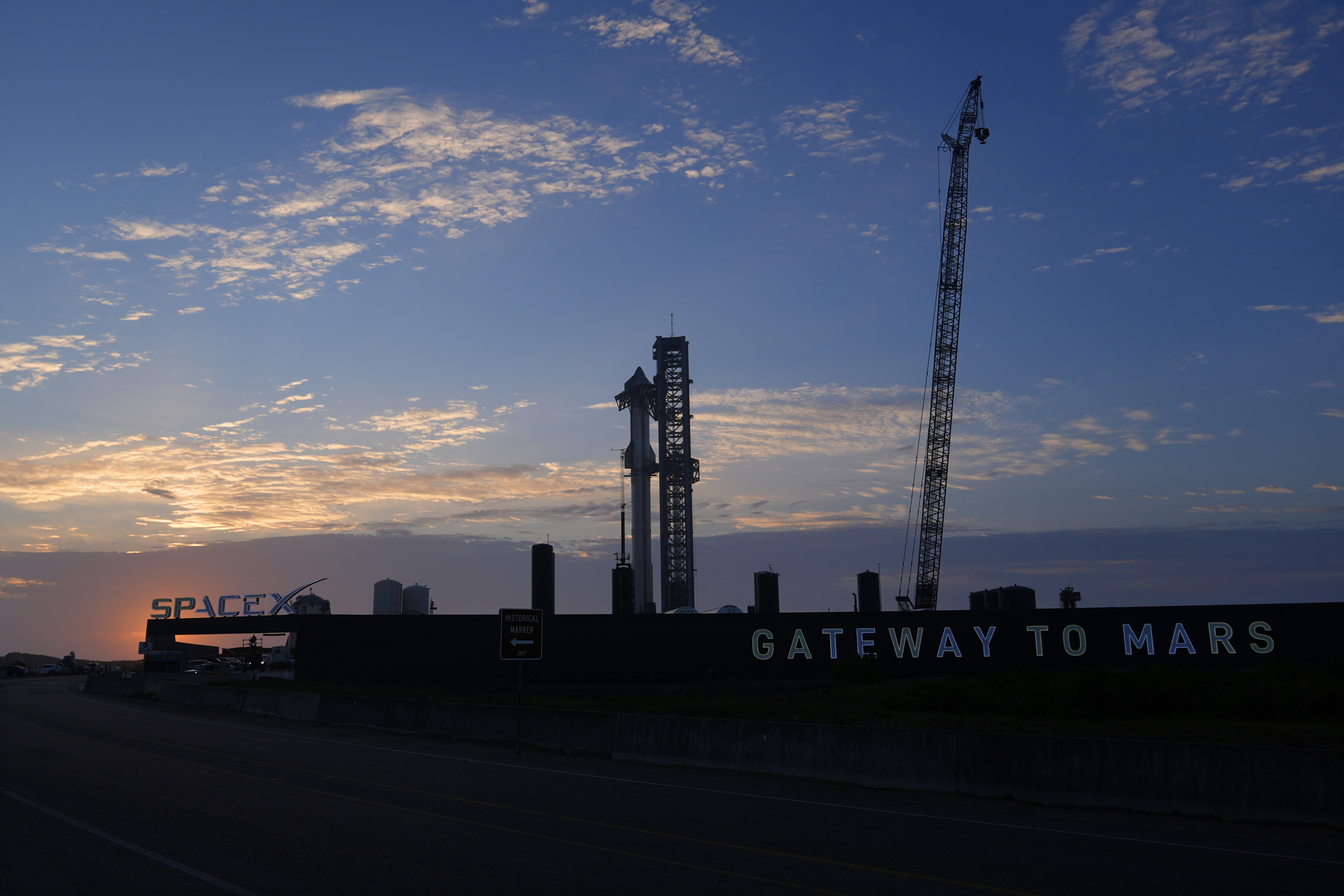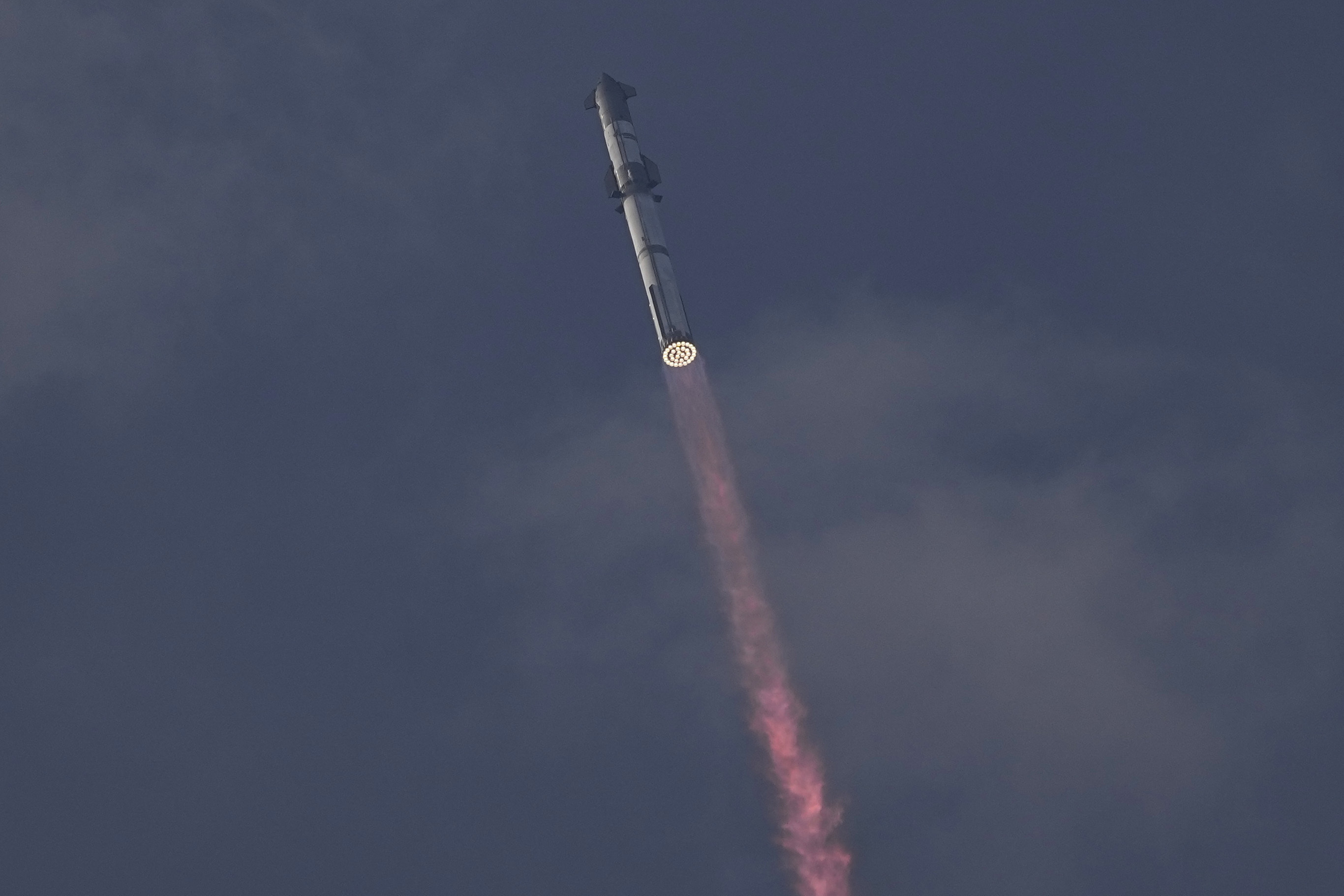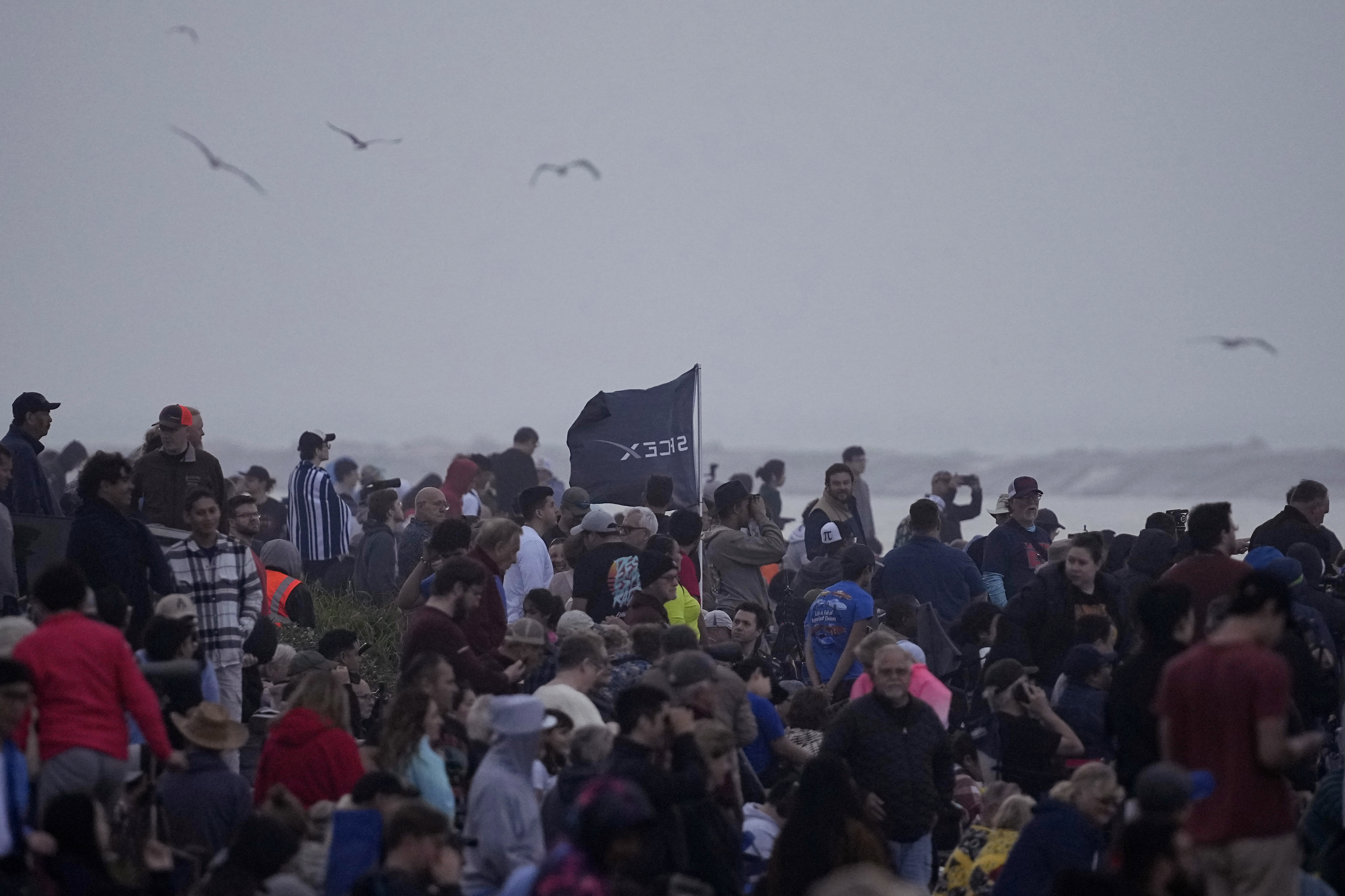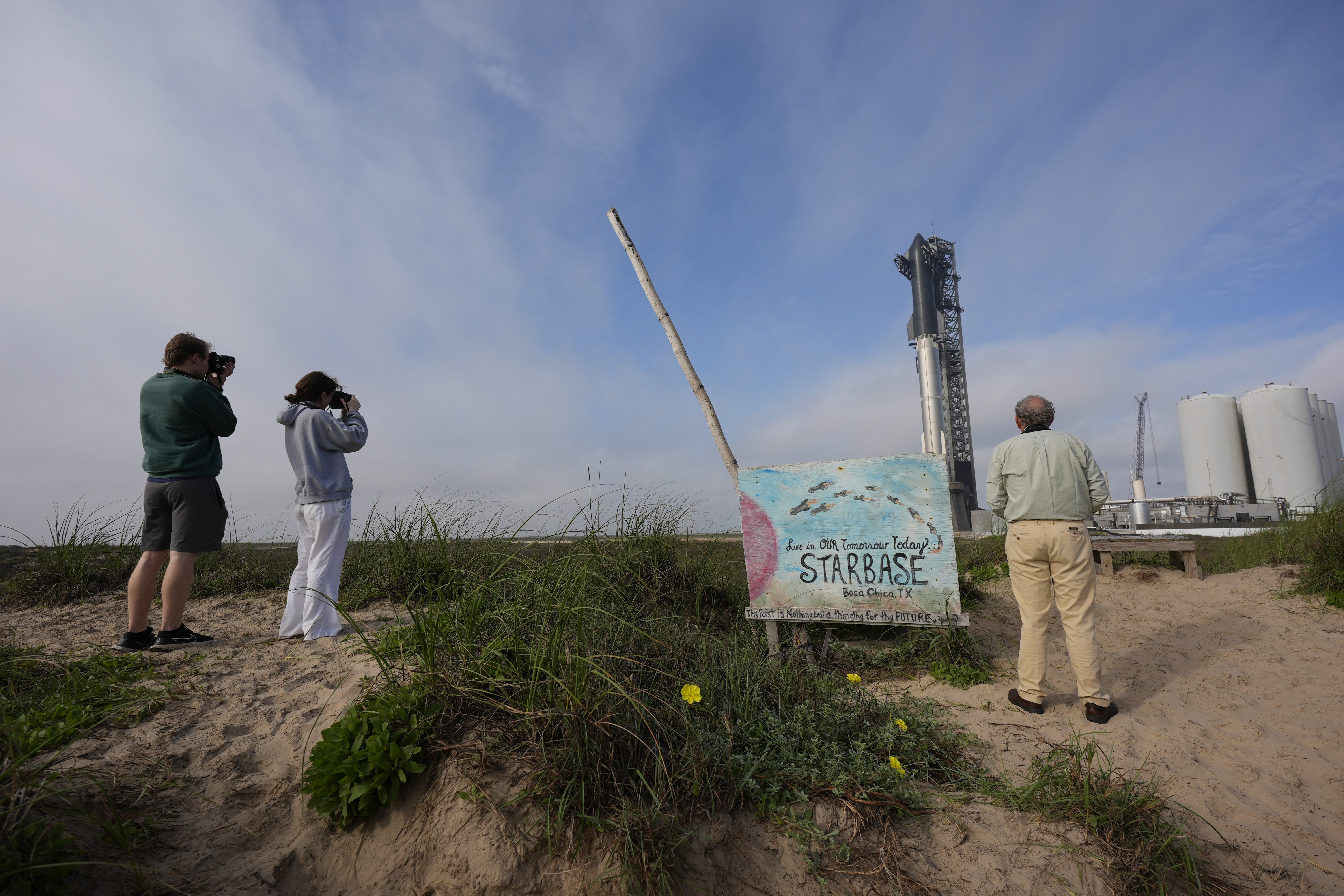SpaceX's mega rocket blasted off on another test flight overnight and made it farther than two previous attempts, but the spacecraft was lost as it descended back to Earth.
The company said it lost contact with the spacecraft as it neared its goal, a splashdown in the Indian Ocean, about an hour after liftoff from the southern tip of Texas near the Mexican border.
This third test achieved multiple milestones before likely breaking apart. The first two flights last year lasted mere minutes before blowing up over the Gulf of Mexico.
READ MORE: Storm carrying massive 'gorilla hail' hits parts of US
The Starship vehicle — which includes the upper Starship spacecraft and a rocket booster known as the Super Heavy — took off from SpaceX's private Starbase facility in Boca Chica, Texas, at 8.25am on Thursday (12.25am Friday AEDT).
An hour after lift off, SpaceX commentators said contact had been lost with the spacecraft.
"The ship has been lost. So no splashdown today," said SpaceX's Dan Huot. "But again, it's incredible to see how much further we got this time around."
Earlier during the flight, which took place exactly 22 years after the rocket company was founded, SpaceX's Elon Musk had congratulated his team.
"SpaceX has come a long way," Musk said via X, the platform formerly known as Twitter, which he now owns.
The deep-space rocket system went through nearly an hour-long integrated flight test. The spacecraft was expected to splash down in the Indian Ocean at the conclusion of the flight, putting the gargantuan vehicle in a position to move on to more complex test flights and, eventually, carry NASA astronauts to the moon's surface.
But after re-entry the team lost two key pieces of communication at the same time: Contact with Starlink, SpaceX's internet service, and with TDRSS — or Tracking and Data Relay Satellite System.
"The team has made the call that the ship has been lost, so no splashdown today," said Dan Huot, SpaceX communications manager, during the live broadcast.
"But again, just it's incredible to see how much further we got this time around."

SpaceX also never intended to recover Starship after this flight test. The spacecraft was expected to make a hard landing. And the Starship spacecraft made it much further into flight than during two previous tests in 2023.
The company routinely frames failures during these early test flights as normal. The goal of these flight tests is to gather crucial data so that engineers can go back and tinker with Starship, improving it for future missions.
SpaceX considers the Starship system crucial to its founding mission: to carry humans to Mars for the first time.
And critically, NASA has chosen Starship – the biggest and most powerful rocket ever built – as the landing vehicle that will ferry its astronauts to the lunar surface on the Artemis III mission slated to take off as soon as September 2026.
"Congrats to SpaceX on a successful test flight! Starship has soared into the heavens. Together, we are making great strides through Artemis to return humanity to the Moon— then look onward to Mars," wrote NASA Administrator Bill Nelson on X.
The Super Heavy booster — the first stage, or bottommost part, of the launch vehicle roared to life and soared out over the Gulf of Mexico.
https://twitter.com/SenBillNelson/status/1768288689694642398?s=20
The Super Heavy booster burned through most of its fuel and broke away from the Starship spacecraft, the upper stage that rides atop the Super Heavy.
The booster was expected to make an autonomous, controlled landing in the ocean, but the booster "didn't light all the engines that we expected and we did lose the booster," Huot said.
SpaceX said it's working to get video of what occurred before the booster hit the water. But the the booster made it farther into flight than a Super Heavy booster has previously made it.
On the past two flights, Super Heavy was destroyed midair before it had a chance to try out landing maneuvers.
The rocket and futuristic-looking spacecraft towers 121 metres, easily exceeding NASA's past and present moon rockets.
NASA watched with keen interest: The space agency needs Starship to succeed in order to land astronauts on the moon in the next two or so years.
This new crop of moonwalkers — the first since last century's Apollo program — will descend to the lunar surface in a Starship, at least the first couple times.







